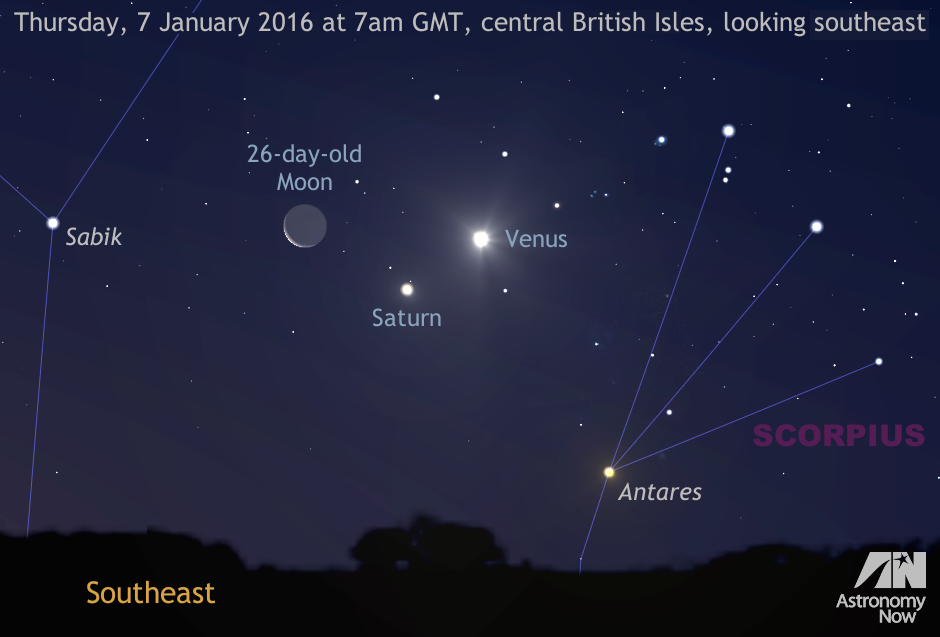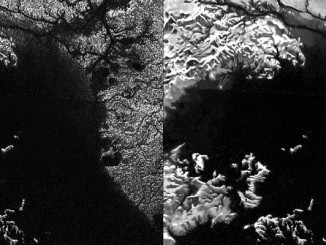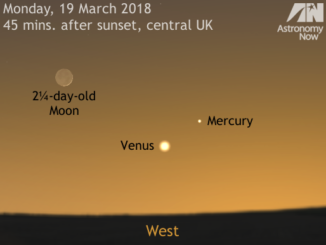
Ringed planet Saturn (also in Ophiuchus) lies just 2° from Venus on this date, so the two planets and the Moon will all fit comfortably within the field of view of most binoculars. Before the twilight grows too bright this has the potential to make a wonderful astrophotograph — but it is important to find a location that has an unobstructed view of the southeast. If you live close to London, you may wish to view nearer 6:45am GMT so that the sky will be darker.
In the telescope (were you able to see it clearly at such a low altitude), magnitude -4 Venus displays a gibbous disc that is 79 percent illuminated and a shade under 14 arcseconds in diameter. This means that Venus requires a magnification of 133x to make it appear the same size as the adjacent Moon does to the unaided eye. Venus lies 1.2 astronomical units or 112 million miles (180 million kilometres) from the Earth.
Slightly larger than 15 arcseconds in diameter across its equator, the apparent size of Saturn’s globe is therefore fractionally larger than Venus on the morning of 7 January. Saturn’s rings span 35 arcseconds and their northern face is tipped widely in our direction. The ringed planet lies 10.8 astronomical units or 1,004 million miles (1616 million kilometres) distant.
If the weather permits you to view Moon, Venus and Saturn in the same binocular field of view — or just with the naked eye — reflect on the knowledge that Venus lies 462 times further away than the Moon, while Saturn is almost nine times further away than Venus!
Attentive observers will have realised that the angular separation of Venus and Saturn is closing, so stay tuned for more news of a very close conjunction between them occurring on Saturday, 9 January.
Inside the magazine
Find out more about what’s up in the night sky in the January 2016 edition of Astronomy Now.
Never miss an issue by subscribing to the UK’s biggest astronomy magazine. Also available for iPad/iPhone and Android devices.




